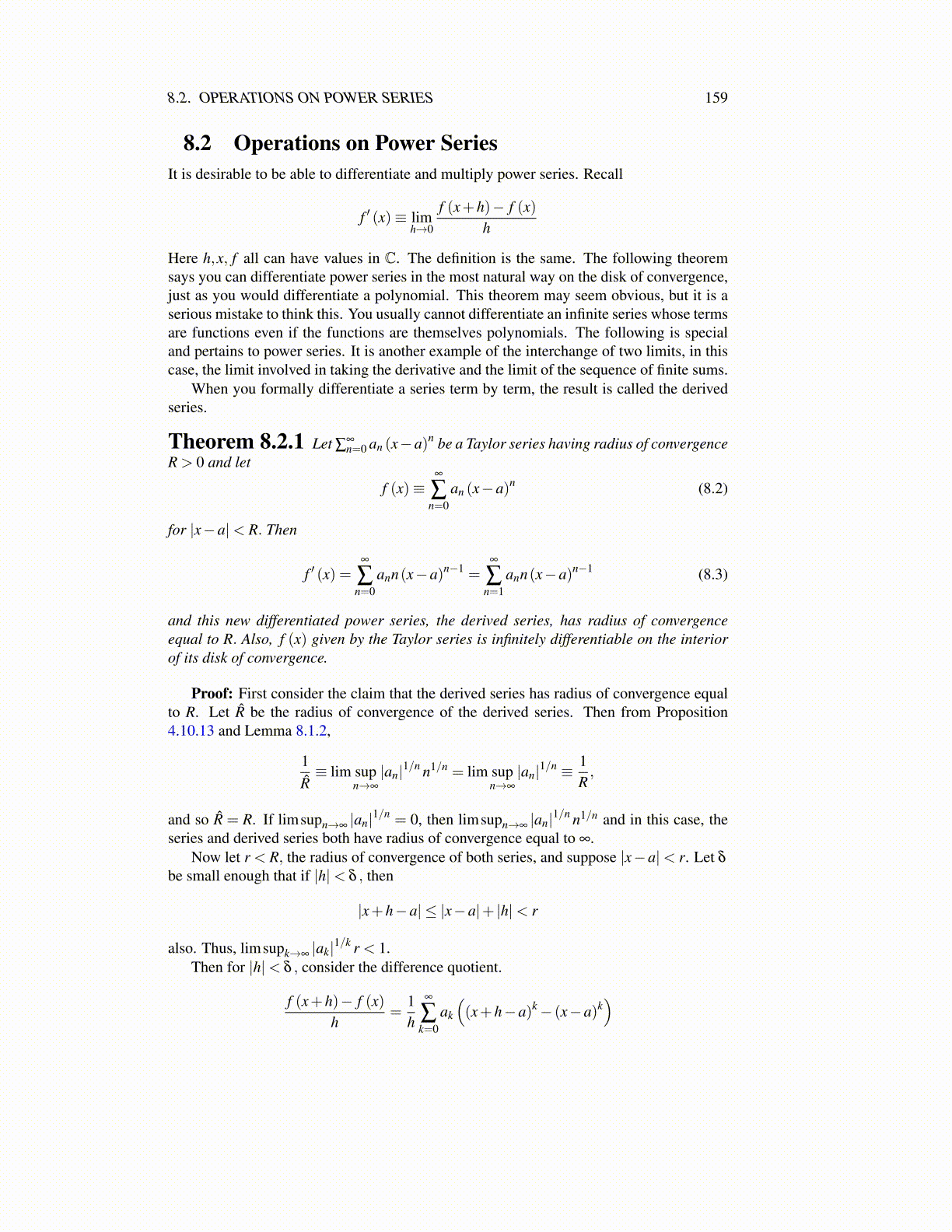
8.2. OPERATIONS ON POWER SERIES 159
which shows that
limh→0
∣∣∣∣∣ f (x+h)− f (x)h
−∞
∑k=1
akk (x−a)k−1
∣∣∣∣∣= 0
Obviously, you can differentiate a power series infinitely often on the interior of the disk ofconvergence by simply repeating this theorem.
As an immediate corollary, it is possible to characterize the coefficients of a Taylorseries.
Corollary 8.2.2 Let ∑∞n=0 an (x−a)n be a Taylor series with radius of convergence r >
0 and let
f (x)≡∞
∑n=0
an (x−a)n for |x−a|< r (8.5)
Then
an =f (n) (a)
n!. (8.6)
Also a Taylor series is infinitely differentiable on the interior of its disk of convergence.
Proof: From 8.5, f (a) = a0 ≡ f (0) (a)/0!. From Theorem 8.2.1,
f ′ (x) =∞
∑n=1
ann(x−a)n−1 = a1 +∞
∑n=2
ann(x−a)n−1 .
Now let x = a and obtain that f ′ (a) = a1 = f ′ (a)/1!. Next use Theorem 8.2.1 again totake the second derivative and obtain
f ′′ (x) = 2a2 +∞
∑n=3
ann(n−1)(x−a)n−2
let x = a in this equation and obtain a2 = f ′′ (a)/2= f ′′ (a)/2!. Continuing this way provesthe corollary.
This also shows the coefficients of a Taylor series are unique. If
∞
∑k=0
ak (x−a)k =∞
∑k=0
bk (x−a)k
for all x in some open set containing a, then ak = bk for all k.It is possible to begin the study of complex analysis by defining the analytic functions
to be those which are correctly given by a power series and this is sometimes done. Fornow, this will be the meaning of the word “analytic”. The above theorem and corollary arethe fundamental ideas in doing this.
Example 8.2.3 Find the sum ∑∞k=1 k2−k.
It may not be obvious what this sum equals but with the above theorem it is easy tofind. From the formula for the sum of a geometric series, 1
1−t = ∑∞k=0 tk if |t| < 1. Dif-
ferentiate both sides to obtain (1− t)−2 = ∑∞k=1 ktk−1 whenever |t|< 1. Let t = 1/2. Then
4 = 1(1−(1/2))2 = ∑
∞k=1 k2−(k−1) and so if you multiply both sides by 2−1, 2 = ∑
∞k=1 k2−k.